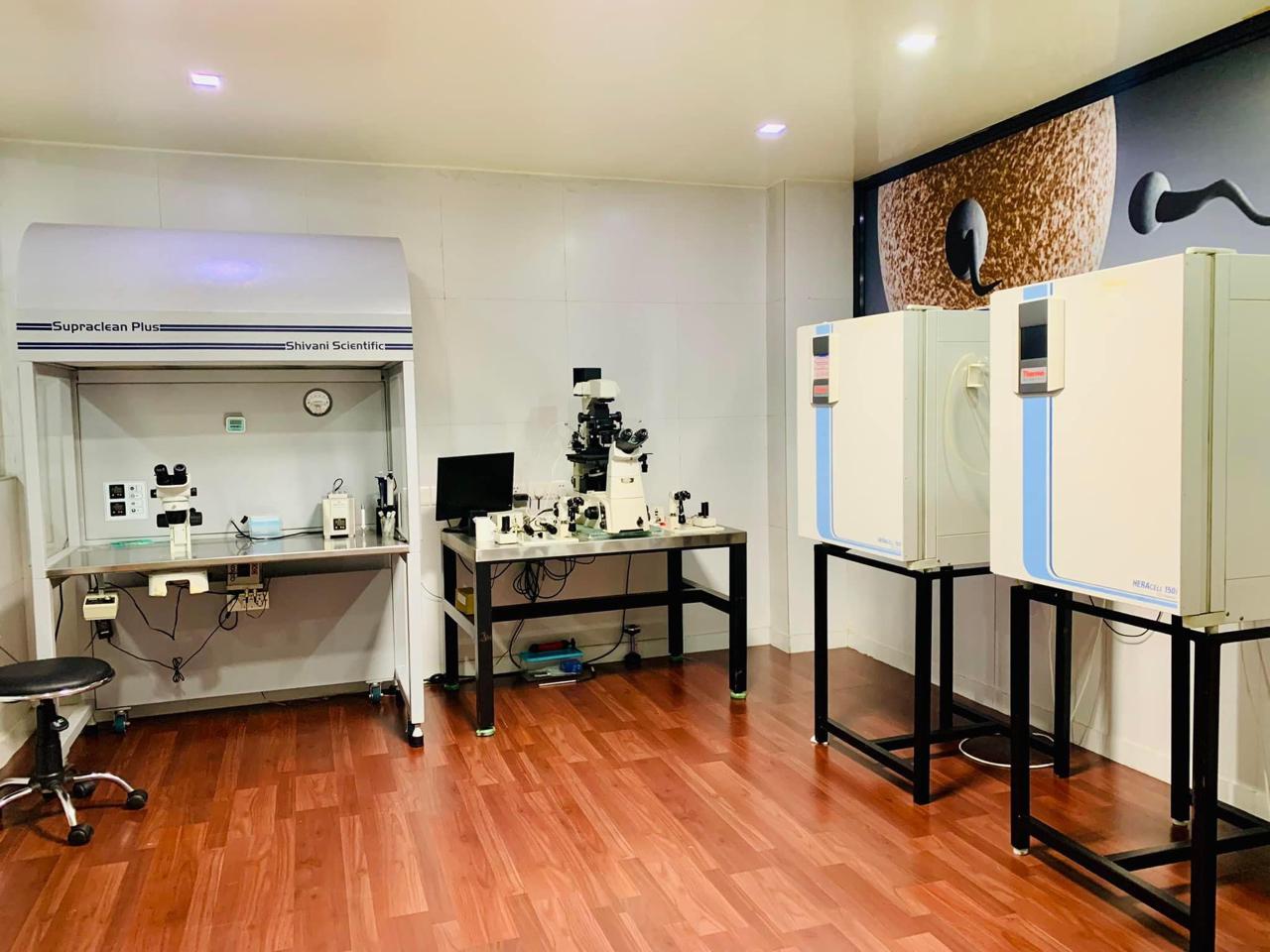Cervical and Endometrial Biopsy
If your doctor discovers an abnormality during a standard pelvic exam or Pap smear, they might suggest a cervical biopsy. During this procedure, a little tissue sample is obtained to help with the diagnosis or rule out cancer. It is important to remember that having this operation does not mean that you have cancer of the cervical region. Learn more about the process, the length of recuperation, and other crucial details associated with a cervical biopsy.

What is a Cervical Biopsy?
A small tissue sample is taken from the cervix, the thin, lower portion of the uterus that is situated at the end of the vagina, during a minor surgical operation called a cervical biopsy. Usually, this surgery is advised after a routine Pap smear or pelvic check reveals an abnormality. Precancerous cells or the human papillomavirus (HPV) could be examples of such anomalies. Since HPV is the most frequent cause of cervical cancer in the world, early detection of any possible dangers is essential.
Cervical cancer and precancerous cells can be found with a cervical biopsy. It can also be used to treat or diagnose other disorders like noncancerous growths (polyps) on the cervix or genital warts.
What Are the Different Types of Cervical Biopsies?
Tissue samples from the cervix are obtained using three main techniques:
What to Expect from a Cervical Biopsy
A simple operation, a cervical biopsy is often carried out in a hospital or physician's office. Even though this may sound frightening, it's important to understand that a cervical biopsy does not always indicate the presence of cervical cancer. As a preventative measure, the process makes sure that any aberrant cells are properly inspected and handled.
Why Might You Need a Cervical Biopsy?
If the findings of your initial cervical cancer screening are abnormal, or if you are experiencing odd symptoms like painful sex or irregular vaginal bleeding between periods, your doctor may suggest a cervical biopsy. Additionally, cervical polyps and vaginal warts can be removed with a biopsy.
Apart from these variables, your physician will evaluate your individual and family medical background to ascertain whether you have an elevated risk of cervical cancer. Additionally, they may examine your lymph nodes to look for any unusual swelling that might point to the spread of aberrant cells.

How to Prepare for a Cervical Biopsy
Timing and Medications
Plan Timing: Try to get your cervical biopsy scheduled the week after your menstrual cycle. Your doctor may find it simpler to collect a clear tissue sample at this time.
Review of Medication: Talk to your doctor about all the medications you are now taking. It can be suggested that you cease using drugs including aspirin, ibuprofen, naproxen, and warfarin that raise the risk of bleeding.
Pre-Procedure Restrictions
Steer Clear of Specific Products: For at least 24 hours before the biopsy, refrain from using douches, tampons, or medicated vaginal creams.
Avoid Sexual Activity: Give yourself at least 24 hours notice before having any sexual activity before the surgery.
Fasting for Anesthesia: Avoid eating anything for at least eight hours before your biopsy if general anaesthesia will be used.
On the Day of the Procedure
Pain management: About 30 minutes before your session, your doctor may advise taking acetaminophen (such as Tylenol) or another pain reliever.
Sanitary Pads: Bring sanitary pads with you in case the operation causes light bleeding.
Transportation: Make plans for a friend or family member to go with you, particularly if you’ll be under general anaesthesia.
It’s advisable to have someone else drive you home because the anaesthesia can make you drowsy. There are a few crucial things to take to ensure a safe and efficient cervical biopsy operation. A successful and efficient biopsy can be facilitated by sticking to pre-procedure protocols, discussing medication with your doctor, and scheduling the biopsy at the proper time.
What to Expect During a Cervical Biopsy?
The process of having a cervical biopsy starts quite similarly to a pelvic checkup. Your feet will be in stirrups as you recline on an examination table. To numb the region, your doctor will use a local anaesthetic. You will be given a general anaesthetic to put you to sleep if you are undergoing a cone biopsy. To maintain the vaginal canal open, the doctor will implant a speculum.
A vinegar and water solution is used to clean the cervix; this procedure may burn a little bit, but it shouldn’t hurt. In a Schiller test, iodine may also be administered to the cervix to aid in the identification of aberrant tissues.
Your doctor will remove the aberrant tissue with a curette, scalpel, or forceps. You may experience a mild pinching sensation if forceps are employed. Although it’s not always required, the doctor could wrap your cervix with absorbent material after the biopsy to reduce bleeding.

Recovery from a Cervical Biopsy
Punch biopsies are usually performed as outpatient procedures, so you can return home right away. A hospital stay of the night may be necessary for other types of biopsies. You may experience some little cramping and spotting while you heal. You may have clear discharge for up to three weeks in addition to cramping and bleeding that may continue for up to a week.
Following a cone biopsy, recovery may take four to six weeks. You might need to refrain from certain activities after the operation. It is normally not permitted to carry heavy objects, have sex, or use douches or tampons for a few weeks following a cone biopsy. Running and other high-intensity exercises are not advised during the healing period. Following an ECC or punch biopsy, restrictions usually remain for one week.
Endometrial Biopsy Overview
A small sample of tissue from the endometrium, or uterine lining, is taken during an endometrial biopsy to examine it for changes in cell composition brought on by anomalous tissues or fluctuations in hormone levels.
Usually taking around ten minutes, the treatment is performed in a doctor’s office without the need for anaesthetic. To detect diseases like endometriosis and other uterine infections, a tiny sample of endometrial tissue is taken, transmitted to a lab, and examined.


Reasons for an Endometrial Biopsy
To identify uterine anomalies or rule out other illnesses, an endometrial biopsy could be advised.
Among the causes are:
- Examining irregular or postmenopausal uterine hemorrhage
- Checking for endometrial cancer
- Assessing problems with fertility
- Evaluating the effect of hormone treatment
It is crucial to avoid endometrial biopsies while pregnant or if you suffer from severe cervical stenosis, acute pelvic inflammatory disease, acute cervical or vaginal infection, cervical malignancy, or blood clotting disorders.
Deciphering Irregularities: Unraveling Abnormal Semen Analysis Results
Preparing for an Endometrial Biopsy
Tell your doctor if you are or may become pregnant because an endometrial biopsy during pregnancy can result in miscarriage. Before the biopsy, you might need to take a pregnancy test. If the test must be taken at a specified point during your cycle, you may need to keep a record of your menstrual cycles.
Talk to your doctor about all the medications you take, particularly any blood thinners, as these may have an impact on blood clotting. Notify your physician of any iodine or latex allergies, as well as bleeding disorders. Your doctor may advise taking ibuprofen or another painkiller 30 to 60 minutes before the surgery to reduce discomfort. Additionally, you might be given a mild sedative, so make arrangements for a ride home.
During the Endometrial Biopsy
You will lie on a table with your feet in stirrups while donning a robe or medical gown. Your doctor will clean your cervix and vagina after a brief pelvic exam. Your cervix may be clamped to maintain its stability, which could be slightly uncomfortable. To get a tissue sample, a tiny, flexible tube known as a pipeline is passed through the cervix and into the uterus.
Typically, the process takes ten minutes or so. After that, the sample is sent to a lab for analysis; the findings are usually available seven to ten days later. After the procedure, you can have minor spotting or bleeding, and you’ll get a menstrual pad to wear. It’s also common to experience mild cramps, and you can take medication if necessary. Steer clear of tampons.

Risks of an Endometrial Biopsy
There are dangers associated with any invasive operation, including infection and, in rare cases, uterine wall puncture. A small amount of bleeding and pain are typical side effects.
Speak with your physician if you encounter:
- Excessive bleeding
- Fever or chills
- Bleeding for longer than two days following the biopsy
- Abnormal or odorous vaginal discharge
- Severe lower abdominal pain
Risks of an Endometrial Biopsy
A normal endometrial biopsy reveals no cancerous or aberrant cells. Unusual outcomes may indicate:
- Noncancerous, benign growths
- Endometrial hyperplasia, also known as endometrial thickness.
- Carcinogenic cells
Comprehending the process and making sufficient preparations can guarantee a seamless encounter, support precise diagnosis, and facilitate efficient treatment strategizing.
At Venus IVF, we offer expert fertility treatments for men and women, helping you achieve your dream family.
Contact Info
- +977 976-1682874
- +977 976-1682874
- info@venusivf.com
- Venus Hospital, Second floor- IVF department Mid baneshwor Kathmandu, Nepal
- 12-5 PM : Sunday to Friday (except Saturday)
